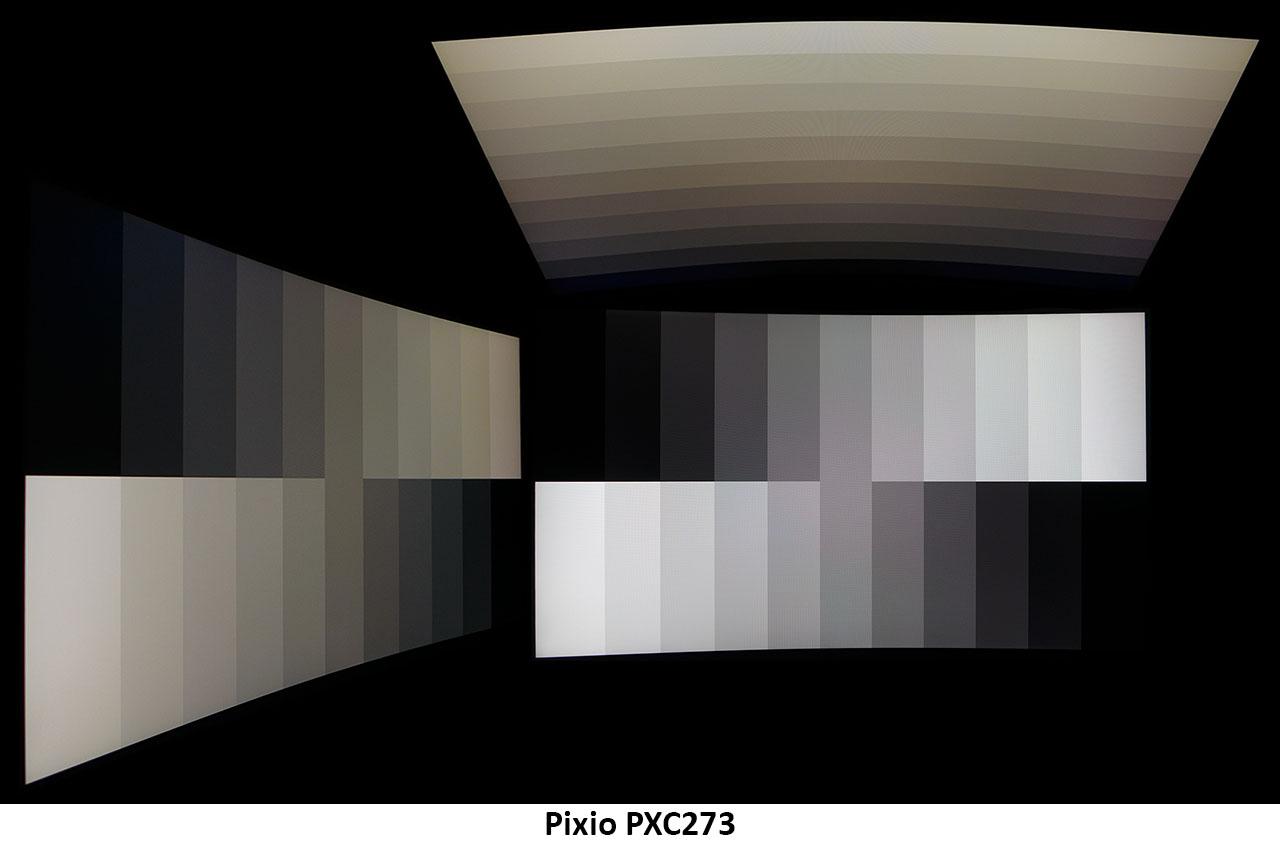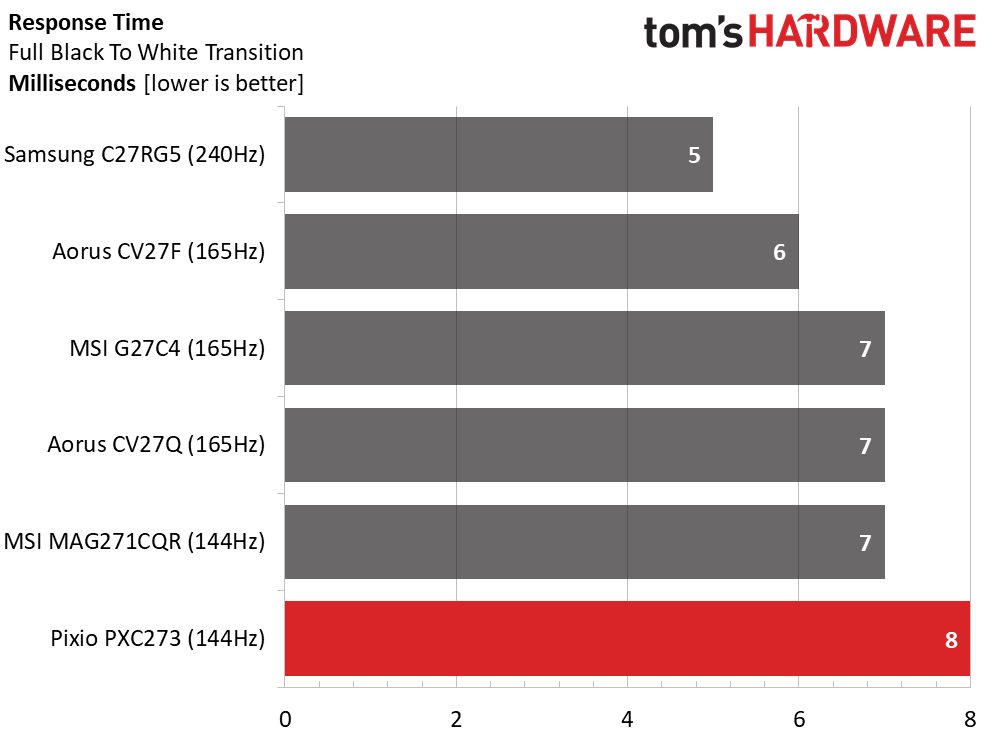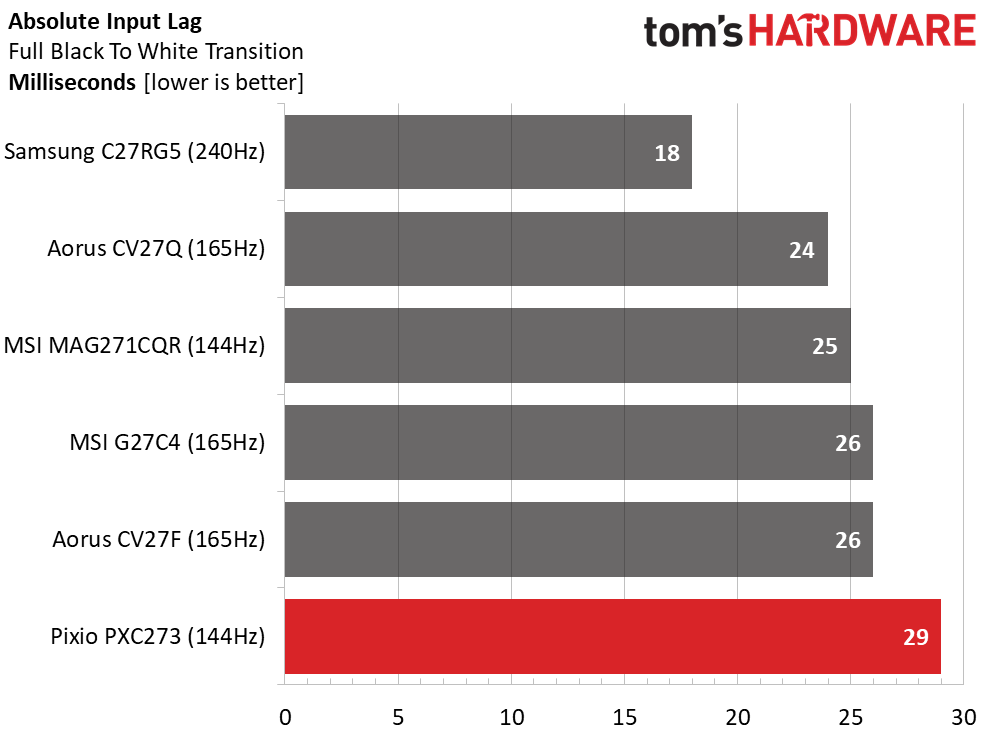Why you can trust Tom's Hardware
Viewing Angles

The PXC273 acquit itself well in the viewing angle test. Our photo shows a green shift at 45 degrees to the sides and a 30% light reduction. Detail remains solid in both the horizontal and vertical planes with all steps still visible. From the top, the gamma is much lower, making lighter shades harder to see. Performance is typical of other VA panels we’ve reviewed.
Screen Uniformity
To learn how we measure screen uniformity, click here.

Our PXC273 sample has some of the best screen uniformity we’ve ever measured. There are no visible hotspots, bleed or glow. This is impressive, given the tight fit of its anti-glare layer. Dark material was artifact-free and remained well-detailed down to the zero-signal level. This is excellent performance.
Pixel Response and Input Lag
Click here to read up on our pixel response and input lag testing procedures.


A gaming monitor must deliver speed and smooth game performance above anything else. The PXC273 manages both. Its 8ms screen draw time is 1ms slower than typical 144Hz screens, but in practice we couldn’t see a difference. Motion blur was barely visible, and there was no stutter, no matter how fast on-screen movements were.
Input lag is last place among our comparison sample, but 29ms is by no means slow. Unless you’re a highly skilled gamer, you won’t notice any lag when playing fast-paced games on the PXC273. To casual gamers, control response will feel every bit as fast as with the other screens here. Those with more frag cred will want to check out the Samsung C27RG5, which recently set a new speed record in our testing. For everyone else though, the $200 PXC273 is more than qualified for the weekly LAN party.
MORE: Best Gaming Monitors
Get Tom's Hardware's best news and in-depth reviews, straight to your inbox.
MORE: How We Test Monitors
MORE: All Monitor Content
Current page: Viewing Angles, Uniformity, Response and Lag
Prev Page Grayscale, Gamma and Color Next Page Conclusion
Christian Eberle is a Contributing Editor for Tom's Hardware US. He's a veteran reviewer of A/V equipment, specializing in monitors. Christian began his obsession with tech when he built his first PC in 1991, a 286 running DOS 3.0 at a blazing 12MHz. In 2006, he undertook training from the Imaging Science Foundation in video calibration and testing and thus started a passion for precise imaging that persists to this day. He is also a professional musician with a degree from the New England Conservatory as a classical bassoonist which he used to good effect as a performer with the West Point Army Band from 1987 to 2013. He enjoys watching movies and listening to high-end audio in his custom-built home theater and can be seen riding trails near his home on a race-ready ICE VTX recumbent trike. Christian enjoys the endless summer in Florida where he lives with his wife and Chihuahua and plays with orchestras around the state.